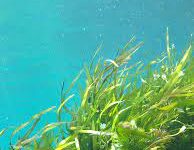As the possibility of deep space missions to Mars looms closer, scientists are actively addressing one of the biggest concerns: food.
For previous space missions, scientists prioritized providing astronauts with necessary nutrition over food quality. However, this mindset is not sustainable when considering a long-term space mission. With factors like the weight of the food supply, the potential degradation of micronutrients, and the physical and mental well-being of the crew, scientists agree that the revision of the current food preservation system is a necessity.
The predicted duration of a Mars mission is almost three years, but to adequately support the crew, at least five years’ worth of food is needed. However, not only would this food supply weigh a lot, but as of now, the astronaut food supply has only lasted up to a year. Due to these challenges, an ideal solution would be for astronauts to grow their own gardens, thus saving resources and promoting a healthy diet. However, they would need to cultivate this “space garden” in the dark with artificial nutrients rather than sunlight, bypassing plants’ natural photosynthesis process. Robert Jinkerson, a chemical engineer at the University of California, believes the key to growing plants in the dark is reactivating metabolic pathways that plants use to germinate as seedlings underground.
Previous researchers at the Department of Plant Physiology found that plants cannot grow in dimmer or dark conditions once exposed to light. Therefore, Jinkerson reasoned that people can only grow in space by replacing plants’ dependence on light with hydrocarbons derived from exhaled carbon dioxide and water.
In his previous research, Jinkerson found that certain types of algae could grow in the dark when fed acetate, a liquid hydrocarbon. He partnered with Feng Jiao, a chemist from the University of Delaware who was working on an electrolyzer that converted carbon dioxide and water to acetate and ethylene using electricity. Jiao and his students revamped the electrolyzer to alter the output from 30% to 99% acetate, high enough to feed plants directly. To confirm the effects of acetate on plant development, Jinkerson, Jiao, and their team fed acetate to pearl oyster mushrooms, yeast, and algae grown in the dark. The team found that these organisms converted chemical energy into new growth nearly 18 times more efficiently than if they had fed plants grown through photosynthesis.
Any diet, however, needs variety. The three organisms they tested are naturally grown in the dark, but plants require sunlight. In the same study, the team fed acetate to various crops grown in the dark, like lettuce and tomatoes. Although the vegetables fully developed, they did not grow to their full size, remaining in a miniature form. To optimize a plant’s growth on acetate, Jinkerson and his colleagues are using CRISPR technology to reactivate the genes used during germination. The most promising avenue is the glyoxylate cycle, a metabolic pathway that conserves carbon for later growth, which involves a prominent enzyme in the process that breaks down acetate. To test the viability of the cycle, they engineered mustard plants to produce more of this enzyme, resulting in the plants growing to their full size instead of being stunted. This success is propelling researchers forward to further reroute the metabolization of acetate to the glyoxylate cycle instead of the typical metabolic pathways.
“To optimize a plant’s growth on acetate, Jinkerson and his colleagues are using CRISPR technology to reactivate the genes used during germination. “
Even with these advances, it will be difficult to raise plants in complete darkness since they rely on light for many other aspects such as flowering. Jinkerson and his team are working on adjusting the amount and timing of light exposure so that plants are only exposed for crucial development. Overall, this research is taking promising steps toward a new source of space food and is bringing science closer to its goal of further space exploration. Sooner or later, food could be grown anywhere in any condition, especially on Mars.






